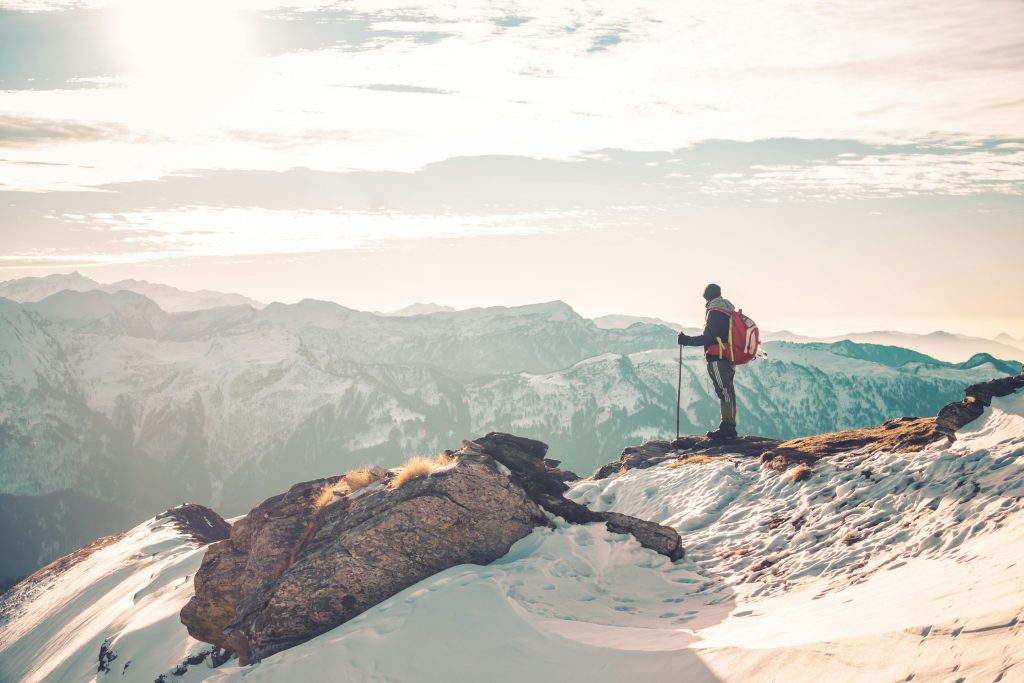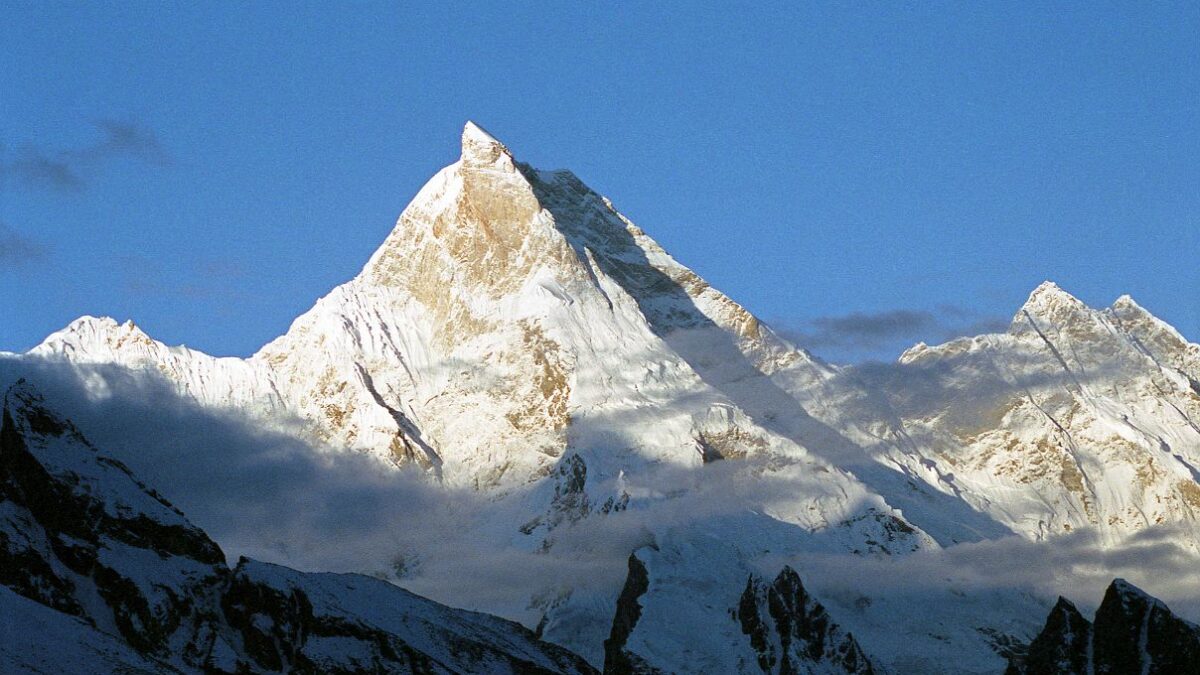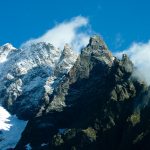The Majestic Yermanendu Kangri, located in the Karakoram Range of Pakistan, stands as an awe-inspiring peak for adventurers and mountaineers. This lesser-known mountain offers not only a challenging climb but also breathtaking views and a rich cultural experience.The Majestic Yermanendu Kangri.
Best Time to Visit TYermanendu Kangri
The optimal period to embark on an expedition to TYermanendu Kangri is from June to September. During these months, the weather conditions are relatively favorable, providing climbers with a safer and more enjoyable experience. The days are longer, offering more daylight for trekking and climbing.
How to Reach TYermanendu Kangri
Reaching TYermanendu Kangri requires meticulous planning. The journey typically begins in Islamabad, Pakistan’s capital. From Islamabad, travelers can fly to Skardu, a key gateway to the Karakoram Range. From Skardu, a jeep ride to Askole, the last village before the trek begins, is necessary. The trek from Askole to the base camp is an adventure in itself, taking climbers through rugged terrain and spectacular landscapes.
Trekking Routes and Difficulty Level

The standard route to TYermanendu Kangri involves traversing glaciers and negotiating steep ascents. The climb is demanding, requiring a high level of physical fitness, technical climbing skills, and acclimatization to high altitudes. It is advisable to undertake this expedition with experienced guides and proper mountaineering equipment.The Majestic Yermanendu Kangri.
Accommodation The Majestic Yermanendu Kangri
Accommodations along the trek to TYermanendu Kangri are primarily in the form of campsites. Trekkers must be self-sufficient, carrying their tents, sleeping bags, and other camping essentials. In Skardu and Askole, basic guesthouses and lodges are available, offering a comfortable place to rest before and after the trek.
Case Study: The British Expedition of 1980
A Pioneering Ascent
In 1980, a British team led by climber Andrew Cox became the first to successfully summit Yermanendu Kangri. The expedition faced numerous challenges, including treacherous weather, limited resources, and uncharted terrain. Using rudimentary maps and basic equipment, the team’s perseverance and adaptability became their strongest assets.
Achievements and Challenges
- Achievements: The team’s ascent remains a significant milestone in mountaineering history.
- Challenges: Harsh weather conditions, avalanches, and lack of prior climbing data posed major hurdles.
Lessons for Future Climbers
The British expedition underscored the importance of:
- Detailed preparation and planning
- Local guide support
- Awareness of unpredictable weather patterns
Why Yermanendu Kangri Is a Must-Visit
- Untouched Beauty: Experience the raw magnificence of an unclimbed and unspoiled peak.
- Adventure Opportunity: Ideal for experienced climbers seeking a new challenge.
- Rich Culture: Immerse yourself in the vibrant traditions of Gilgit-Baltistan’s local communities.
Tips for Exploring Yermanendu Kangri
- Secure Necessary Permits: Obtain all required permissions from the local authorities in advance.
- Hire Experienced Guides: Local guides provide invaluable insights and ensure safety.
- Acclimatize Properly: Spend several days at high altitude to adjust to the thin air.
- Invest in Quality Gear: Ensure all equipment is suited for extreme cold and high-altitude climbing.
- Pack Sufficient Supplies: Bring ample food, water, and medical kits for emergencies.
Dangerous Routes to Yermanendu Kangri
North Face Route
The North Face Route is notorious for its steep ice walls and unpredictable avalanches. It requires advanced climbing techniques and proper acclimatization.
- Challenges:
- Frequent avalanches
- Steep gradients
- Crevasse hazards
East Ridge Route
While visually stunning, the East Ridge is highly technical, with narrow ridges and sudden weather changes.
- Challenges:
- Strong winds
- Limited safe spots for camping
- Risk of rockfalls
Alternative Routes for Safer Exploration
For those not ready for Yermanendu Kangri’s extreme routes, nearby trekking trails offer incredible views and experiences:
- Baltoro Glacier Trek: Witness the grandeur of the Karakoram without technical climbing.
- Snow Lake Trek: A serene yet adventurous journey through glacial landscapes.
Cultural and Environmental Importance
Yermanendu Kangri is more than a climber’s paradise—it’s a symbol of cultural and environmental significance:
- Local Heritage: The nearby villages showcase centuries-old traditions and hospitality.
- Eco-Conscious Exploration: Protecting the fragile environment is vital for future generations.
Why Yermanendu Kangri Deserves Recognition
This majestic peak stands out for its:
- Raw Wilderness: An uncharted destination offering solitude and discovery.
- Challenging Terrain: Perfect for seasoned mountaineers seeking new horizons.
- Scenic Splendor: A visual treat that rivals the most famous peaks in the world.
Essential Gear for TYermanendu Kangri Expedition
- Clothing: High-quality, layered clothing suitable for extreme cold.
- Footwear: Insulated, waterproof mountaineering boots.
- Camping Gear: Durable tents, sleeping bags rated for sub-zero temperatures, and portable stoves.
- Climbing Equipment: Ropes, harnesses, crampons, ice axes, and helmets.
- Miscellaneous: High-calorie food supplies, water purification tablets, sunscreen, and a first-aid kit.
Safety Tips for Climbers
- Acclimatize Properly: Spend several days at high altitudes to reduce the risk of altitude sickness.
- Stay Hydrated: Drink ample fluids to stay hydrated, as dehydration can exacerbate altitude-related issues.
- Hire Experienced Guides: Local guides are invaluable for navigating the challenging terrain and ensuring safety.
- Monitor Weather Conditions: Be aware of weather forecasts to avoid dangerous conditions such as avalanches and storms.The Majestic Yermanendu Kangri.
FAQs about TYermanendu Kangri
Q: Do I need a permit to climb TYermanendu Kangri?
A: Yes, climbers must obtain a permit from the Pakistan Alpine Club.
Q: What is the altitude of TYermanendu Kangri?
A: TYermanendu Kangri stands at approximately 7,500 meters (24,606 feet).
Q: Are there any medical facilities available during the trek?
A: Medical facilities are limited. It is crucial to carry a comprehensive first-aid kit and know basic first aid.
Q: Can beginners attempt the TYermanendu Kangri climb?
A: The climb is recommended for experienced mountaineers due to its technical and physical challenges.
Comparison Table: TYermanendu Kangri vs. K2
| Feature | TYermanendu Kangri | K2 |
|---|---|---|
| Altitude | 7,500 meters | 8,611 meters |
| Difficulty Level | High | Extreme |
| Best Time to Visit | June to September | June to August |
| Accommodation | Campsites | Campsites and Base Camps |
| Accessibility | Moderate | Difficult |
Local Culture and Traditions
The area surrounding TYermanendu Kangri is inhabited by the Balti people, known for their hospitality and rich cultural traditions. Visitors can experience local customs, traditional Balti music, and cuisine. Engaging with the local community enhances the overall expedition experience, providing a deeper understanding of the region’s heritage.
Environmental Impact and Sustainability
Climbers are urged to practice sustainable and responsible tourism. This includes minimizing waste, respecting local wildlife, and adhering to the Leave No Trace principles. Preserving the pristine environment of TYermanendu Kangri is essential for future generations to enjoy its natural beauty.
Table of Contents
External Links for More Information
TYermanendu Kangri offers an unparalleled adventure for those seeking to explore one of Pakistan’s hidden gems. Proper preparation, respect for the environment, and adherence to safety guidelines will ensure a rewarding and unforgettable experience.


